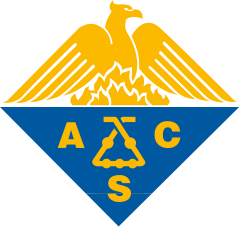Chiral ruthenium(II) complexes as stabilizers for an RNA triplex: In contrast to Λ-enantiomer, Δ-enantiomer stabilizes the Watson-Crick duplex and the Hoogsteen strand without significant preference
Publication type: Journal Article
Publication date: 2021-08-01
scimago Q2
wos Q1
SJR: 0.680
CiteScore: 8.5
Impact factor: 4.2
ISSN: 01437208, 18733743
General Chemical Engineering
Process Chemistry and Technology
Abstract
To further determine the factors governing the triplex stabilization by chiral ruthium(II) polypyridyl complexes, two new dppz-beased binding reagents, Δ-[Ru(bpy) 2 (6-NO 2 -dppz)] 2+ (Δ- 1 ; bpy = 2,2′-bipyridine; 6-NO 2 -dppz = 6-nitro-dipyrido-3,2- a ,2′,3′- c ]phenazine) and Λ-[Ru(bpy) 2 (6-NO 2 -dppz)] 2+ (Λ- 1 ), have been synthesized and characterized in this work. Binding properties of the two enantiomers Δ- 1 and Λ- 1 with the RNA poly(U)•poly(A)*poly(U) triplex have been studied by spectroscopic technologies and viscosity measurements as well as melting measurements. Spectral titrations and viscosity experiments as well as light-scattering experiments show that although the two enantiomers bind to the triplex through an intercalative mode, the binding affinity of Δ- 1 toward the triplex is slightly higer than that of Λ- 1 . Moreover, melting measurements show that the two enantiomers exhibit different stabilization effects on the triplex under the same conditions. The enantiomer Δ- 1 stabilizes the triplex without significant preference, thereby almost equally stabilizing the Watson-Crick base-paired duplex (the template duplex) and the Hoogsteen base-paired strand (third-strand) of the triplex. In contrast to Δ- 1 , Λ- 1 shows preference for stabilizing the template duplex rather than third-strand to a large extent. This suggests that the racemic complex [Ru(bpy) 2 (6-NO 2 -dppz)] 2+ is similar as a non-specific metallointercalator for the triplex investigated in this study. The results obtained in this work show that in addition to chiralities of Ru(II) polypyridyl complexes, substituent effects of the main ligands also play important roles in altering the ability and selectivity of the metal complex enantiomers to stabilize the triplex. Two enantiomers Λ/Δ-[Ru(bpy) 2 (6-NO 2 -dppz)] 2+ (Λ/Δ- 1 ; bpy = 2,2′-bipyridine, 6-NO 2 -dppz = 6-nitro-dipyrido-3,2- a ,2′,3′- c ]phenazine) were synthesized as binders for the RNA poly(U)•poly(A)*poly(U) triplex. Results indicate that Δ- 1 stabilizes the triplex without significantly selectivity, while Λ- 1 shows preference for stabilizing the template duplex rather than third-strand, indicating that the racemic [Ru(bpy) 2 (6-NO 2 -dppz)] 2+ is a non-specific intercalator the triplex. • Bpy = 2,2ʹ-bipyridine and 6-NO 2 -dppz = 6-nitro-dipyrido-3,2- a ,2′,3′- c ]phenazine. • Λ/Δ-[Ru(bpy) 2 (6-NO 2 -dppz)] 2+ (Λ/Δ- 1 ) were synthesize as binders for poly(U).•poly(A)*poly(U). • Unlike Λ- 1 , Δ- 1 stabilizes the triplex without obvious selectivity. • The third-strand stabilizing effect of Δ- 1 is more marked than that of Λ- 1. • [Ru(bpy) 2 (6-NO 2 -dppz)] 2+ is a non-specific intercalator for poly(U).•poly(A)*poly(U).
Found
Nothing found, try to update filter.
Found
Nothing found, try to update filter.
Top-30
Journals
|
1
|
|
|
Inorganic Chemistry
1 publication, 33.33%
|
|
|
ChemistrySelect
1 publication, 33.33%
|
|
|
Russian Chemical Reviews
1 publication, 33.33%
|
|
|
1
|
Publishers
|
1
|
|
|
American Chemical Society (ACS)
1 publication, 33.33%
|
|
|
Wiley
1 publication, 33.33%
|
|
|
Autonomous Non-profit Organization Editorial Board of the journal Uspekhi Khimii
1 publication, 33.33%
|
|
|
1
|
- We do not take into account publications without a DOI.
- Statistics recalculated weekly.
Are you a researcher?
Create a profile to get free access to personal recommendations for colleagues and new articles.
Metrics
3
Total citations:
3
Citations from 2024:
1
(33.33%)
Cite this
GOST |
RIS |
BibTex
Cite this
GOST
Copy
Li Y., Liu X., Tan L. Chiral ruthenium(II) complexes as stabilizers for an RNA triplex: In contrast to Λ-enantiomer, Δ-enantiomer stabilizes the Watson-Crick duplex and the Hoogsteen strand without significant preference // Dyes and Pigments. 2021. Vol. 192. p. 109406.
GOST all authors (up to 50)
Copy
Li Y., Liu X., Tan L. Chiral ruthenium(II) complexes as stabilizers for an RNA triplex: In contrast to Λ-enantiomer, Δ-enantiomer stabilizes the Watson-Crick duplex and the Hoogsteen strand without significant preference // Dyes and Pigments. 2021. Vol. 192. p. 109406.
Cite this
RIS
Copy
TY - JOUR
DO - 10.1016/j.dyepig.2021.109406
UR - https://doi.org/10.1016/j.dyepig.2021.109406
TI - Chiral ruthenium(II) complexes as stabilizers for an RNA triplex: In contrast to Λ-enantiomer, Δ-enantiomer stabilizes the Watson-Crick duplex and the Hoogsteen strand without significant preference
T2 - Dyes and Pigments
AU - Li, Yixiang
AU - Liu, Xiaohua
AU - Tan, Li-Feng
PY - 2021
DA - 2021/08/01
PB - Elsevier
SP - 109406
VL - 192
SN - 0143-7208
SN - 1873-3743
ER -
Cite this
BibTex (up to 50 authors)
Copy
@article{2021_Li,
author = {Yixiang Li and Xiaohua Liu and Li-Feng Tan},
title = {Chiral ruthenium(II) complexes as stabilizers for an RNA triplex: In contrast to Λ-enantiomer, Δ-enantiomer stabilizes the Watson-Crick duplex and the Hoogsteen strand without significant preference},
journal = {Dyes and Pigments},
year = {2021},
volume = {192},
publisher = {Elsevier},
month = {aug},
url = {https://doi.org/10.1016/j.dyepig.2021.109406},
pages = {109406},
doi = {10.1016/j.dyepig.2021.109406}
}





